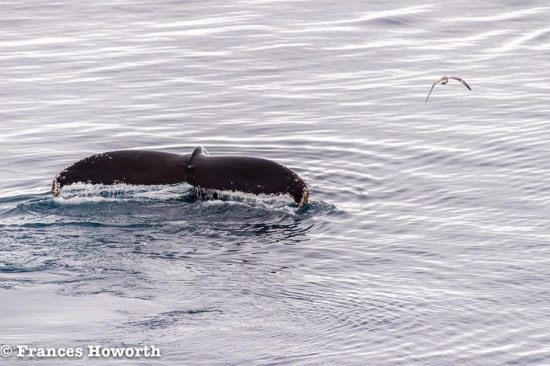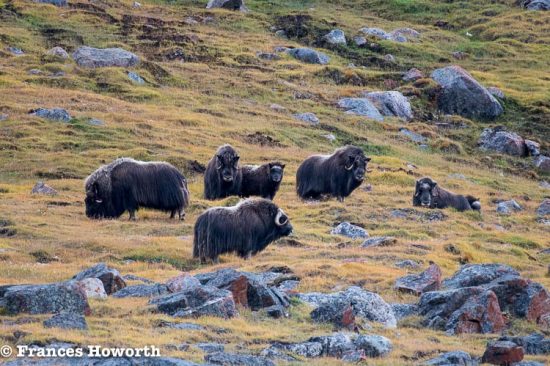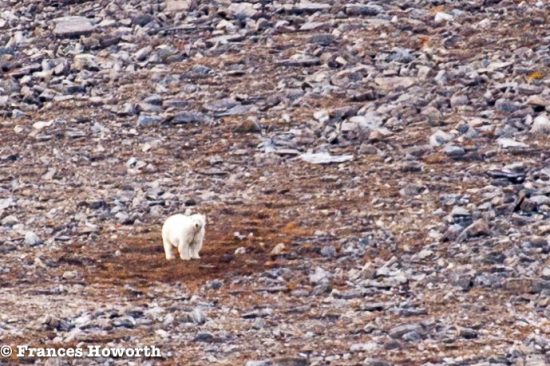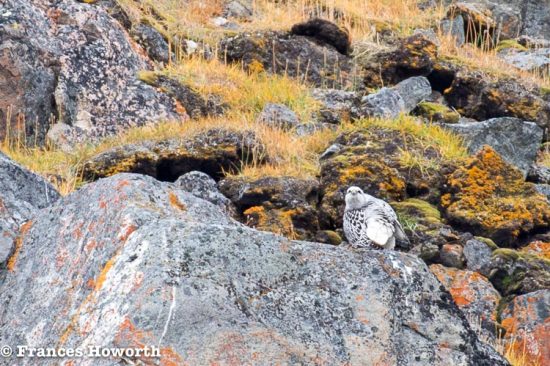
Summertime visitors to the Arctic are often struck by the surprising abundance of birds and animals they find there. The fact is that few of these actually live in the Arctic. Most spend the winters in much warmer climates down south. As a rule, the number of plant and animal species increases tenfold as you travel from the Arctic towards the more temperate regions.
The reason is obvious: it’s cold.
Poikilothermal animals—those with body temperatures and metabolisms that change with environmental conditions cannot, for the most part, survive in the Arctic. Their blood and tissues freeze as the temperature drops below 0°C or 32°F. Consequently, there are no snakes, lizards, or frogs in these latitudes.

On the other hand, homeothermal animals those that maintain a fairly constant body temperature can survive in the Arctic even when the ambient temperature changes drastically.
When it comes to wildlife the wild polar bear is the Arctic incarnate. There cannot be a passenger on board this ship that is not looking forward to sighting one.

But the Polar bear is not the only land mammal you are likely to encounter in the Arctic wilderness. The Musk Ox is a wonderfully shaggy version of a prehistoric bison. It freely moves around the tundra in small herds and is hunted for its tusks, meat and super soft wonderfully warm wool.
The Arctic fox changes colour in summer from winter white to one that Matches the brown) grey terrain.
Arctic wolves are less common but nevertheless are just as exciting to spot. Much easier sightings can be made of the Arctic Hare who seem to defy logic and remain white coated throughout the seasons. This big, bouncing, bunny can hop around at speed of 30 mph so it pays to the camera ready.
At sea, whales, walrus and seals are likely to provide the most sightings but dolphins can be spotted as well.

When it comes to birdlife, the Gyrfalcon reign supreme in these latitudes. With a wingspan of around 4ft, the colour of their plumage varies from dark grey to snowy white. Equally majestic are the peregrine falcon and the snowy owl
On the shore, black bellied and ringed plovers pillage mollusks and insects on the beach. Ruddy Turnstones, Purple Sandpipers and Red Phalarge are also to be found in abundance
Seabirds include Terns, Fulmars and murres with shearwater, kittiwakes, jaegers and skuas keep those on deck amused with their occasional flybys
Frances and Michael Howorth explored the North West Passages onboard Ocean Endeavour with the help of Destination Canada www.destinationcanada.com and Adventure Canada www.adventurecanada.com We are truly grateful to them both for the opportunity they provided with us to do our job.
